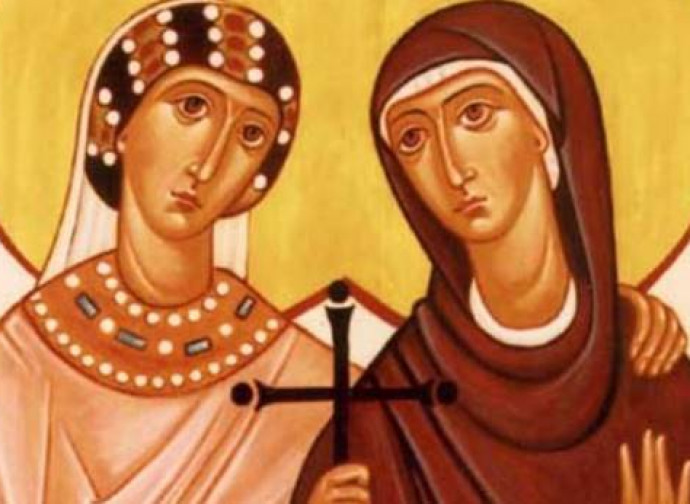Saints Perpetua and Felicitas
Extraordinary pages on the Faith of the early Christians describe the Passion of Perpetua and Felicitas, among the most illustrious African saints

Extraordinary pages on the Faith of the early Christians describe the Passion of Perpetua and Felicitas, among the most illustrious African saints. They were condemned to martyrdom under Emperor Septimius Severus, together with their companions Revocatus, Saturninus, Secundulus and Saturus. Since Saturus was not present at the time of the arrest of his five Christian companions, who were still only catechumens whom he had converted himself, he gave himself up to the authorities and he too was jailed in the prison of Thuburbo Minus, today's Tebourba, in Tunisia. Their Passio, in the original Latin version (there is also a later Greek version), is a composite document that contains a preface, the direct account by Saint Perpetua of the days of imprisonment, a shorter account by Saint Saturus and, finally, the narration of the martyrdom (attributed to the contemporary Tertullian), which took place March 7, 203, on the birthday of Geta, the emperor’s son.
Perpetua was a matron about 22 years old, well-educated and mother of a child she was still breastfeeding. Her father was a pagan who, during the days of her imprisonment, tried several times to induce her to deny God. The diary of Perpetua in prison offers us the saint's inner perspective, with all her sorrow for her parent's lack of faith, “the only one of my whole family who would take no joy in my martyrdom” and to whom she had tried to make it clear that taking away her love for Christ meant denying her own identity: “I cannot call myself anything other than what I am: a Christian”. A Christian aware of the spiritual battle necessary to gain heavenly joys.
She had a renowned vision of a narrow bronze staircase rising up to the sky, its sides studded with “swords, spears, hooks, sabres, skewers” that lacerated the flesh of those who tried to ascend without fixing their eyes on high. At the foot of the ladder stood a huge dragon, symbol of Satan, which laid traps for whoever tried to climb up. Perpetua saw herself in the act of beginning the ascent, placing her foot on the head of the dragon “as if I had placed it on the first step” and climbing up to where she could see an immense garden, populated by many thousands of souls dressed in white, where a white-haired man dressed as a shepherd welcomed her saying: “Welcome, my child”. She also had a vision of the pains of Purgatory in which her brother Dinocrates, who died a pagan at the age of seven, was immersed, and whom she managed to free with her fervent prayers. During this time all five catechumens received Baptism.
Felicitas, instead, was an eight month pregnant slave. In prison she became distressed at the thought that her martyrdom could be delayed: Roman law forbade the execution of a pregnant woman and she feared that she would later be killed together with evildoers. Three days before the date set for her martyrdom (Secundulus died in prison), she prayed with Perpetua and her other Christian companions: she soon went into labour and gave birth to a baby girl, whom “one of her sisters raised as her own daughter”. To a jailer who mocked her during the pains of childbirth, asking her how she would endure the wild beasts, she replied, “Now the one who suffers what I suffer is me. Then it will be Another who will suffer in me and for me, for I too will suffer for Him.
The fortitude shown by all the future martyrs during their days of imprisonment was such that their jailer Pudens converted, and with him many of those who heard them believed. On 7March, after being moved to a military prison, they were taken to the amphitheatre of Carthage to be exposed to wild beasts. A ferocious cow was set at Perpetua and Felicitas. The noble Christian woman entered the stadium “like a matron of Christ, like one beloved by God”. As soon as she was struck down for the first time she got up with great poise and, seeing Felicitas prostrate, approached her, helped her up and they “stood up together” and were then put to the sword.
Understandably, the cult of Felicitas and Perpetua immediately spread throughout Christianity and their dies natalis was included in the Depositio martyrum, the ancient calendar of the Church of Rome, dating back to 336. The two saints are also among the seven ancient female martyrs invoked in the Roman Canon, the principal Eucharistic prayer in use in the Catholic Church since the very first centuries, confirming the admiration that has always been inspired by the virtues of Felicitas and Perpetua, the two bridal mothers who loved Christ crucified and risen as He asked to be loved.
Patrons of: mothers, pregnant women




